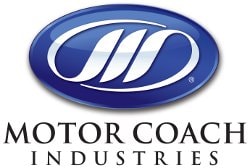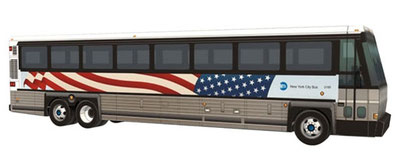
MCI Motor Coach Industries Manuals PDF


Motor Coach Industries History
Some MCI Motor Coach Industries Manuals PDF are above the page.
MCI was founded in 1933 in Winnipeg, Manitoba by Harry Zoltok. The latter, owner of a repair shop, Fort Garry Motor Body and Paint Works Limited, developed a vehicle to transport his workers. He sketched a vehicle that could have up to 11 passengers on a Packard chassis. The Canadian subsidiary of the US carrier Greyhound, one of its major customers, became the major shareholder in 1958. In 1962, a new plant was built in Pembina, North Dakota to allow Greyhound to cope with the expansion of its market, and to switch GMC productions to its own production. In 1974 another factory was opened in Roswell, New Mexico, under the name of Transportation Manufacturing Corporation.
In December 1986, Greyhound was divided, Greyhound Lines was sold to a group of investors and Greyhound Lines of Canada, MCI and Transportation Manufacturing Corporation remained with the Greyhound Corporation, which was renamed Dial, Inc. in 1991.
In 1987, Greyhound Corporation bought the General Motors (GMC) coachbuilding division. MCI also took control of the manufacture of transit buses. Rapid Transit Series (RTS) production was transferred to the Transportation Manufacturing Corporation. MCI bought the GM bus assembly plant in Saint-Eustache, Quebec, which produced the Canadian Classic Transit buses. Transportation Manufacturing Corporation ceased production of MCI vehicles in 1990 to focus on RTS production.
In 1993, MCI became an independent corporation under the name of Motor Coach Industries International Inc.
In 1994 MCI merged with DINA S.A., a Mexican company, and in the following two years developed the Viaggio 1000 DOT for production and sale in the US and Canadian market. At the end of 1999/2000 the models G4100, G4500 and F3500 were marketed in the United States and Canada by the new structure in Mexico, MCI Mexico. Production of the G4100 and G4500 was then transferred to Winnipeg and Pembina.
Transportation Manufacturing Corporation, whose RTS production rights, was resold to NovaBus in 1994.
In June 1999, DINA S.A. sold its shares of MCI to JLL Partners, a private equity company.
Look - NEW FLYER Bus & Coach.
After declining demand, exacerbating competition and causing layoffs in the early 2000s, production at the Winnipeg and Pembin plants increased in 2006, with the hiring of about 100 employees.
During the early 2000s, MCI consolidated its operations. An installation in Mexico was closed and the Winnipeg site was expanded and modernized. New finishing and painting facilities were built on the site as well as a customer delivery center. At the same time, a 7-year contract was signed with IAMAW, the local union. This agreement includes cost reductions and flexibility for production operations to improve the productivity and competitiveness of the plant.
The company's buses, especially the old MC-8 and the 1980s MC-9, have become standards in interstate bus companies. These particular buses to the structure and the metal side panels were robust and reliable. Many more than millions of kilometers in commercial use before experiencing a second life in occasion in the most varied uses.
Currently, the "J" and "D" models are leaders in the inter-city coach market in North America.
